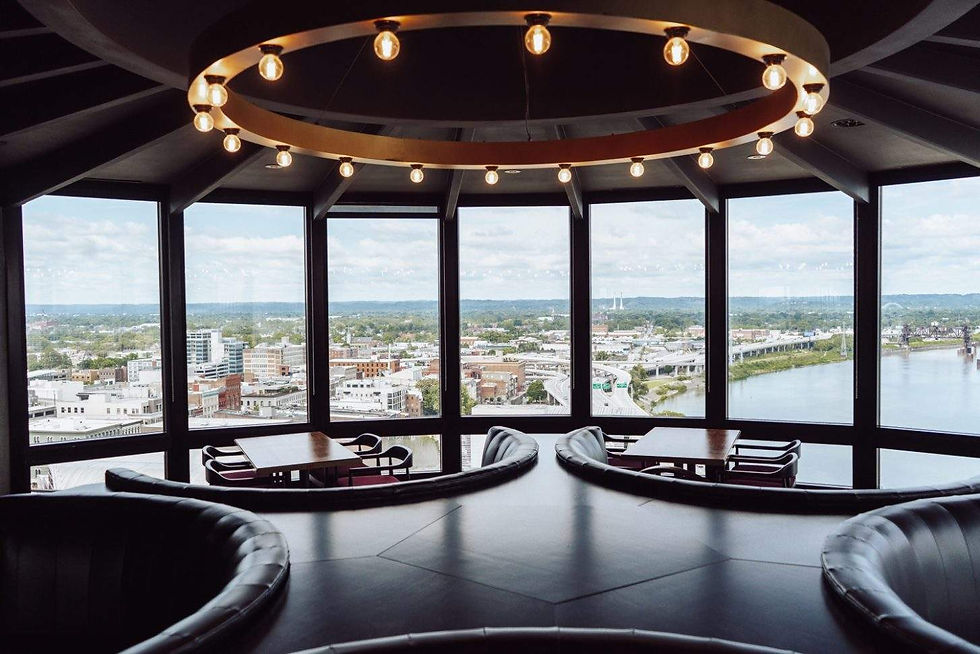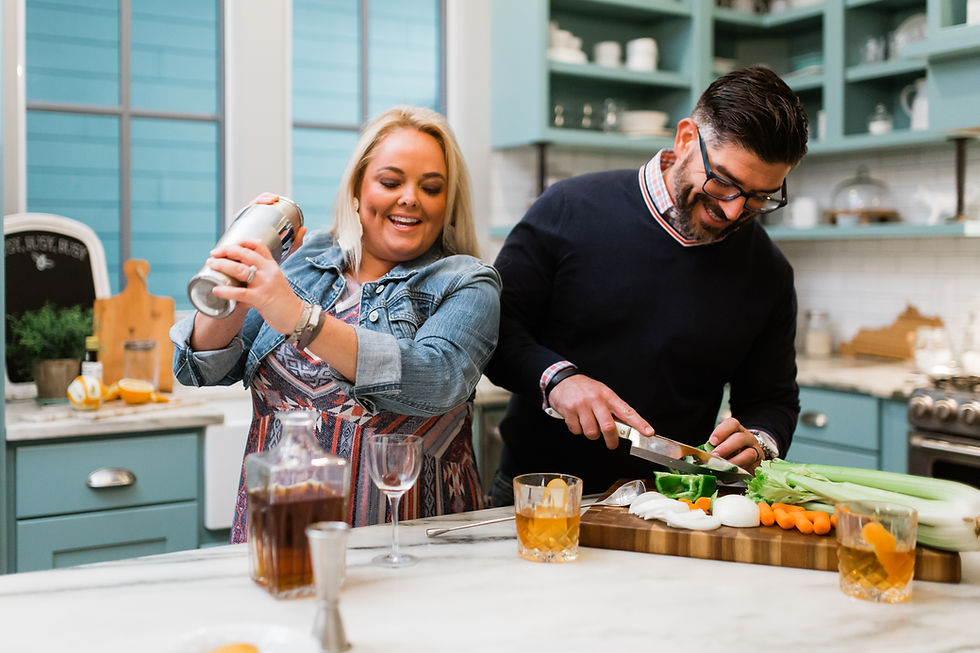10 Common Myths about Bourbon Tours: Learn What's True!
- Carey Fieldhouse
- Aug 22
- 5 min read
Some of the facts might surprise you!

Bourbon is a key part of American heritage and southern craftsmanship, attracting millions to Kentucky each year. The Kentucky Bourbon Trail® features distillery tours and tastings, making it popular with whiskey fans and travelers. With bourbon's continual rising fame come many myths about tours—here are the facts to clear them up!
Myth One: All Distillery Tours Are Exactly the Same
Fact: Every bourbon tour offers a unique experience. While all tours cover bourbon production basics, each distillery varies in atmosphere and approach. Maker’s Mark focuses on craftsmanship and wax-dipping, Buffalo Trace shares history and experiments, and smaller distilleries provide up-close access. For variety, visit both major and boutique producers.
Myth Two: All Bourbon Must Be Made in Bourbon County, Kentucky
Fact: Contrary to popular belief, bourbon doesn't need to be made in Bourbon County, Kentucky; it can be produced anywhere in the U.S. Federal standards emphasize ingredients and methods, not geography. Still, about 95% is distilled in Kentucky, with most famous distilleries on the Kentucky Bourbon Trail® in cities like Bardstown, Frankfort, and Louisville. Today, Bourbon County itself has only a few active distilleries.
Myth Three: Only Bourbon Experts can Enjoy a Bourbon Tour
Fact: Bourbon tours are designed to welcome everyone—from complete beginners to seasoned enthusiasts. You don’t need to know a mash bill from a barrel proof to enjoy the experience. Many tours offer a friendly introduction to bourbon, breaking down the basics in an engaging and easy-to-understand way. Knowledgeable guides make the tour fun and informative, and are always happy to answer questions, whether simple or detailed.
Myth Four: Bourbon is All About the Big Names
Fact: The Kentucky Bourbon Trail® includes well-known distilleries such as Jim Beam, Woodford Reserve, and Wild Turkey, as well as smaller craft producers like Wilderness Trail, New Riff, and Rabbit Hole. These craft distilleries apply various techniques and offer different flavor profiles. Visiting both large and small distilleries along the Kentucky Bourbon Trail can provide insight into the range of practices and approaches within the bourbon industry.
Myth Five: It’s Possible to Visit All the Distilleries in One Day
Fact: Kentucky is often called the Napa Valley of bourbon, and for good reason—there’s a rich variety of distilleries to explore across scenic regions like Louisville, Bardstown, and Lexington. But with so much ground to cover, it’s neither recommended nor realistically possible to visit all the distilleries in a single day. Each tour takes time to enjoy, often lasting over an hour and including guided tastings. To truly savor the experience, many visitors choose to spread their stops over several days and focus on one region at a time.
Myth Six: The Flavor Profile of Bourbon Remains Unchanged Regardless of Its Place of Production
Fact: Bourbon is distinguished by its considerable diversity. While production requires compliance with certain legal standards—such as using a mash bill of at least 51% corn and aging in new, charred oak barrels—the process allows for significant interpretation, resulting in a broad spectrum of flavors. Distilleries may vary their choice of grains, yeast strains, distillation techniques, and aging durations. For instance, some utilize high rye content to create a spicier profile, while others select wheat to achieve a smoother finish. Factors such as water source and fermentation length can also subtly affect the final product.
The aging process introduces further complexity. Within rickhouses, variables including temperature, humidity, and barrel placement substantially impact maturation. Bourbons aged on higher floors typically develop robust, intense characteristics due to greater temperature fluctuations, whereas those matured near the lower levels often exhibit a softer, more mellow palate. Additional differences in barrel char and rotation practices contribute to the uniqueness of each batch. This diversity underscores why exploring the Kentucky Bourbon Trail offers a uniquely engaging and flavorful experience.
Myth Seven: The Age of the Bourbon Matters
Fact: While age can add depth and complexity to bourbon, older doesn’t always mean better—and that’s great news for curious and adventurous palates. It’s a common misconception that the older the bourbon, the higher the quality. In reality, bourbon aging is a delicate balance. Too much time in the barrel can lead to over-oaking, where the spirit becomes overly tannic or loses its original character.
Many bourbon experts agree that the sweet spot for aging typically falls between 6 to 12 years. In this range, bourbons tend to develop a well-rounded flavor profile with a harmonious mix of sweetness, spice, and oak. However, some distillers have mastered the art of creating exceptional bourbons even younger than that. Thanks to innovative aging techniques—like smaller barrels, temperature-controlled environments, or unique mash bills—some bourbons at just 4 or 5 years old are impressively complex, smooth, and flavorful.
This variety is part of what makes the Kentucky Bourbon Trail® so exciting. Whether you're tasting a 10-year flagship from a legacy distillery or a fresh, bold expression from a craft producer, you're invited to explore a wide spectrum of flavors. The key is to keep an open mind and trust your own taste. Don’t feel pressured by age statements or marketing hype—the best bourbon is the one that tastes best to you.
Take notes, ask questions, and explore different options. Each bottle has its own characteristics and tasting them can help identify bourbons that match your preferences.
Myth Eight: No Kids on a Bourbon Tour!
Fact: Although minors are not permitted to participate in tastings, many distilleries welcome children on tours when accompanied by a paying adult. Several venues are family-friendly and provide non-alcoholic beverages such as root beer or lemonade for underage guests during tastings. However, it is advisable to review each distillery's specific policy prior to your visit.
Myth Nine: Bourbon Tasting Is Exactly Like Wine Tasting
Fact: Wine and bourbon tastings are both sensory experiences, but they differ in several ways. Bourbon typically has a higher alcohol content, resulting in distinct characteristics. To assess its aromas—such as caramel, vanilla, spice, and oak—tasters may begin by smelling the glass, sometimes with an open mouth to reduce intensity. Taking small sips and allowing the bourbon to linger can reveal additional flavors. Adding water may alter the taste and affect the finish. Bourbon tastings focus on exploring flavors and aromas without requiring prior expertise.
Myth Ten: Distilleries Serve Only Bourbon
Fact: While bourbon is the main attraction, many distilleries also produce spirits like rye whiskey, vodka, gin, and unique blends. Tours often include cocktails or food pairings, and most sites offer visitor centers, gift shops, and cafes where you can enjoy bourbon-themed dishes and browse for gifts.
So, there you have it! Ten myths debunked. Want to go on a bourbon tour and find out for yourself?
Note: This blog is for informational purposes only and does not represent any endorsement by Pegasus.
Pegasus is an Official Partner

Only Pegasus offers an unmatched blend of luxury and elegance in chauffeured & chartered services, personalized tours, and exclusive Kentucky Bourbon Trail's™ distillery experiences, all backed by 5-star reviews. We excel in providing top-tier transportation for distinguished events like Bourbon and Beyond, Kentucky Bourbon Festival, and Louder Than Life, ensuring a memorable journey every time.




Comments